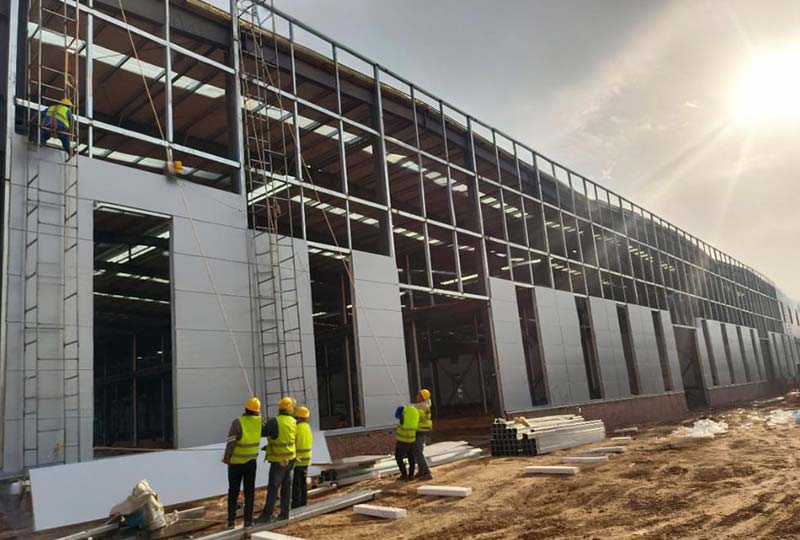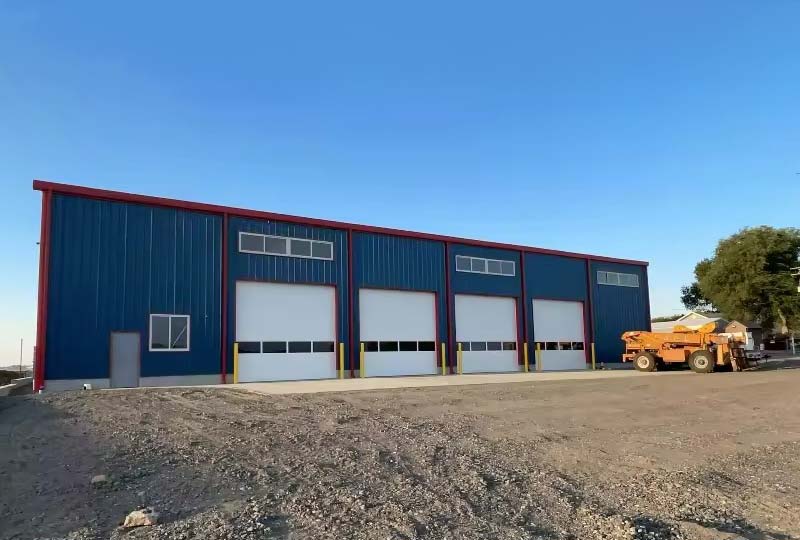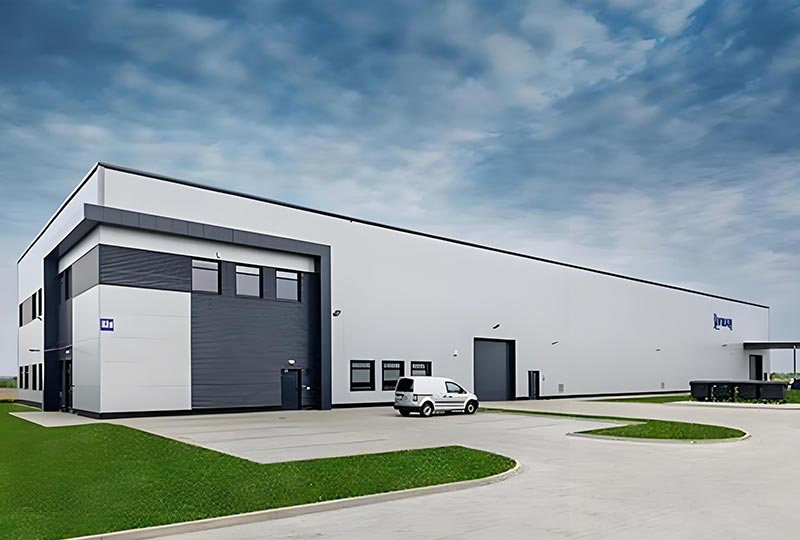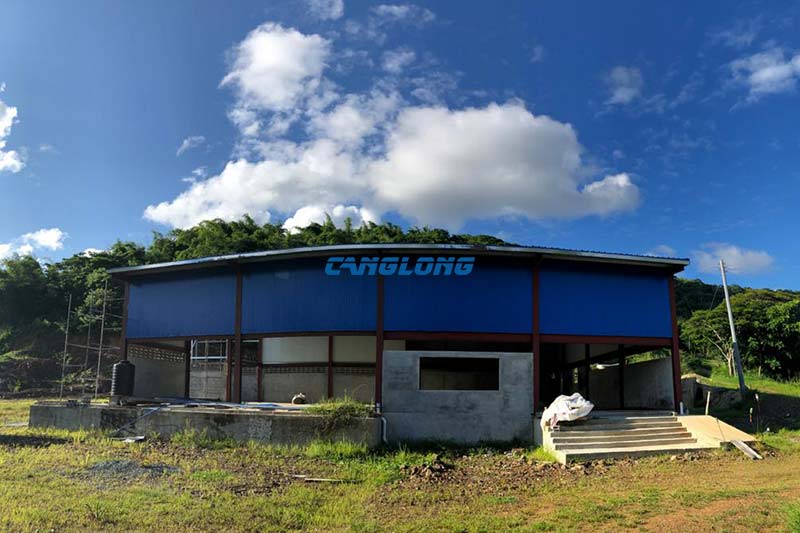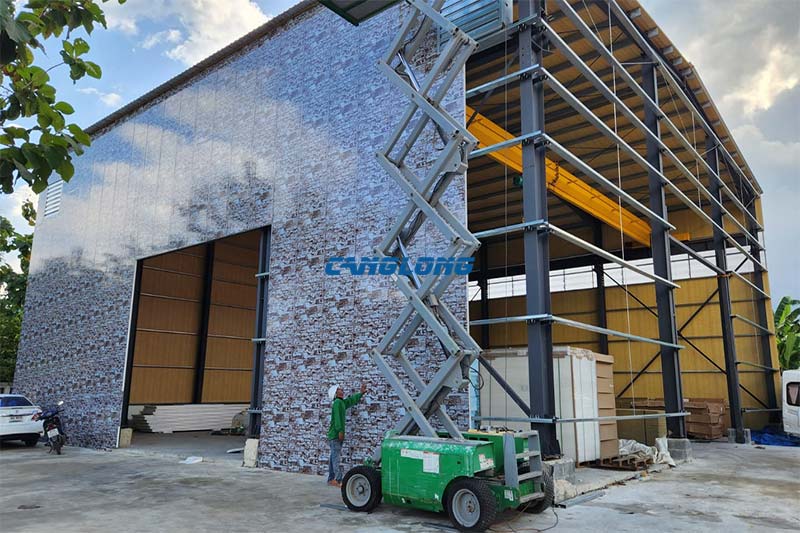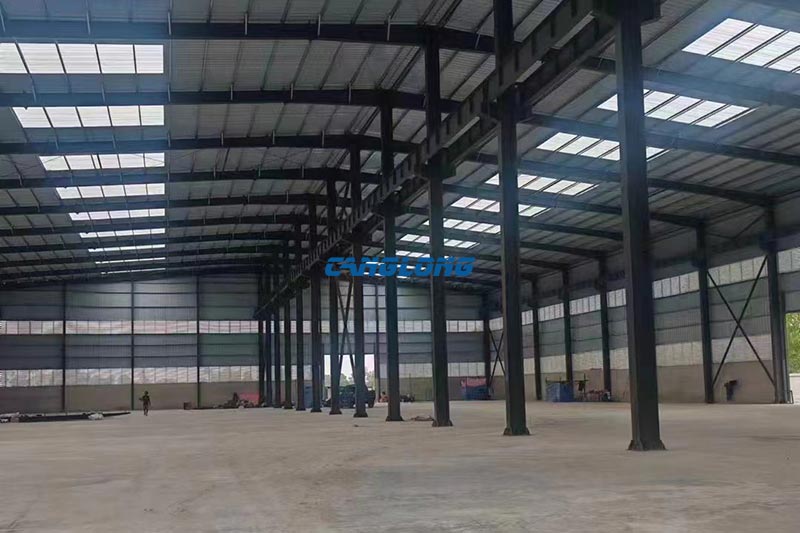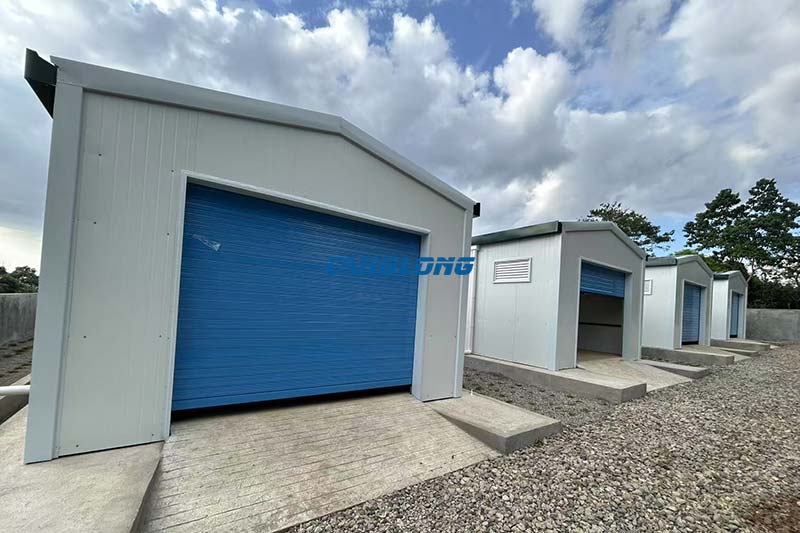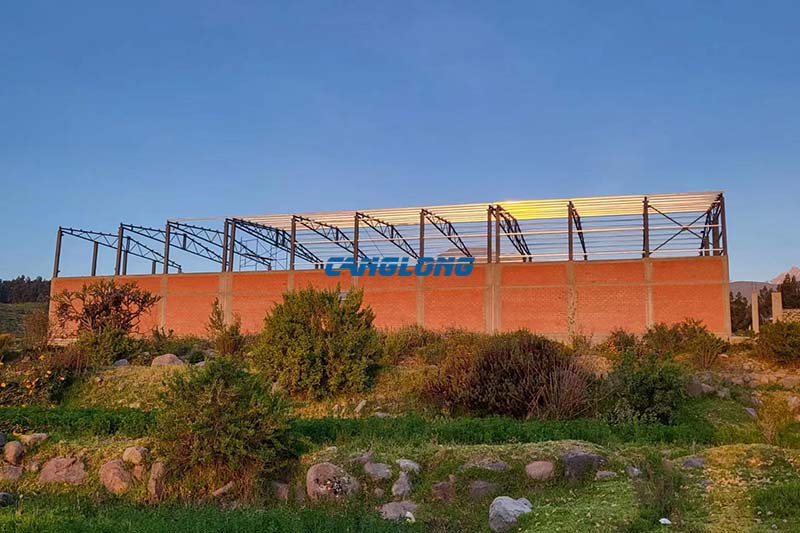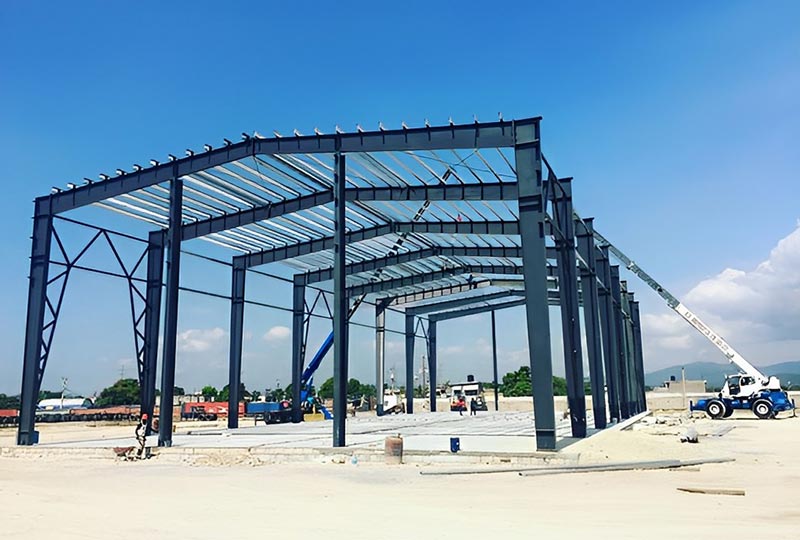
 2025-08-25
2025-08-25
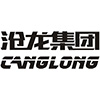
How to choose the right steel building type according to climate zone?
Worldwide, different climate zones have varying requirements for steel buildings. Understanding how to choose the appropriate type of steel building based on climate zones, whether it is single slope, double slope, or considering factors such as roof slope, is crucial for ensuring the stability, functionality, and economy of the building.
1. Tropical climate zone
① Climate characteristics
Tropical regions typically have the characteristics of high temperatures and heavy rainfall. The annual average temperature is high, the precipitation is rich, and there is often rainstorm weather.
② Suitable types of steel buildings
Double slope roof steel building
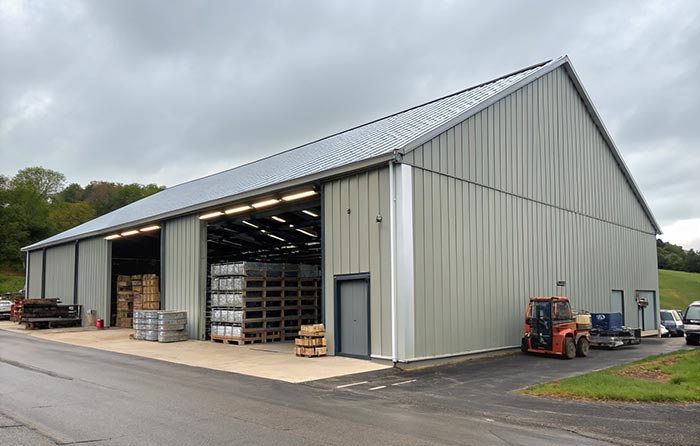
Reason: The slope of a double pitched roof is relatively large, usually between 30 ° and 60 °. This steep slope is conducive to the rapid discharge of rainwater, avoiding the accumulation of rainwater on the roof and reducing the risk of roof leakage. Structurally, a double pitched roof can make the interior space of the building more organized, making it easier to layout and use. For example, in some tropical regions of Southeast Asia, industrial plants mostly use steel buildings with double pitched roofs.
Case Study: A Thai electronic component production plant adopts a steel building structure with a double sloping roof. The roof slope is 45 °, and during the rainy season, rainwater can quickly flow down the roof slope, protecting the equipment and goods inside the factory from being soaked by rainwater. At the same time, this structure also provides a relatively spacious interior space, meeting the layout requirements of production equipment.
Single slope roof steel building (high span structure)
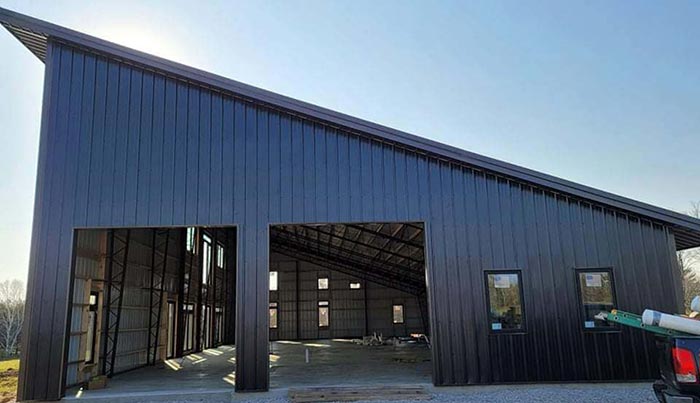
Reason: Single slope roofs can also be applied in tropical regions, especially for buildings that require large internal column free spaces. A single slope roof with a large-span structure can provide open interior space while ensuring drainage function. Its slope is generally between 20 ° and 40 °. Although the slope is relatively gentle compared to double sloped roofs, due to the high and concentrated rainfall in tropical regions, as long as the drainage system is designed reasonably, it can effectively drain water.
Case Study: A large logistics warehouse in Indonesia adopts a steel building with a high span single slope roof. The roof slope is 30 degrees, and there are no pillars inside the warehouse to block it, making it convenient for the loading, unloading, and storage of large goods. During the rainy season, with a well-developed drainage system, rainwater can be promptly drained from the roof to ensure the normal use of the warehouse.
2. Temperate climate zone
① Climate characteristics
Temperate regions have distinct four seasons, with higher temperatures in summer and colder winters. Precipitation is evenly distributed, and there may be snowfall in winter.
② Suitable types of steel buildings
Double slope roof steel building (medium slope)
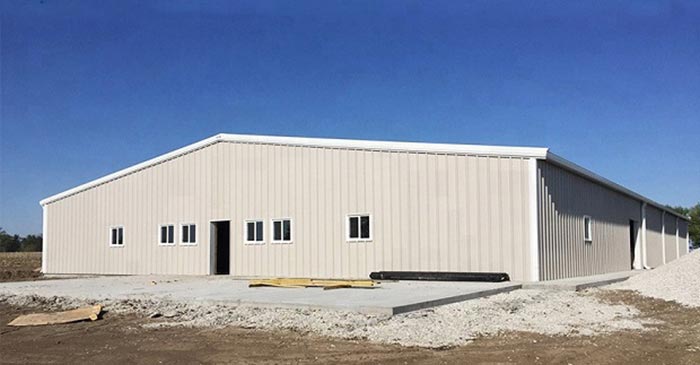
Reason: Double pitched roofs are more common in temperate regions, with slopes typically ranging from 25 ° to 45 °. This slope range can not only ensure that the snow will not accumulate excessively in winter (the slope is slightly slower than that in tropical areas, because the winter snowfall in temperate areas has a different impact on the roof load compared with the rainstorm in tropical areas), but also effectively guide rainwater drainage in summer. The building structure of a double pitched roof is relatively stable and suitable for various building functional needs commonly found in temperate regions, such as residential, commercial, and small industrial plants.
Case Study: A small processing plant in the Midwest region of the United States has adopted a steel building with a double pitched roof with a slope of 35 degrees. In winter, the snow on the roof can slowly slide down, reducing the load-bearing pressure on the roof; In summer, rainwater can also be discharged smoothly. This architectural structure has been widely used in industrial and commercial buildings in the region.
Single slope roof steel building (low span structure)
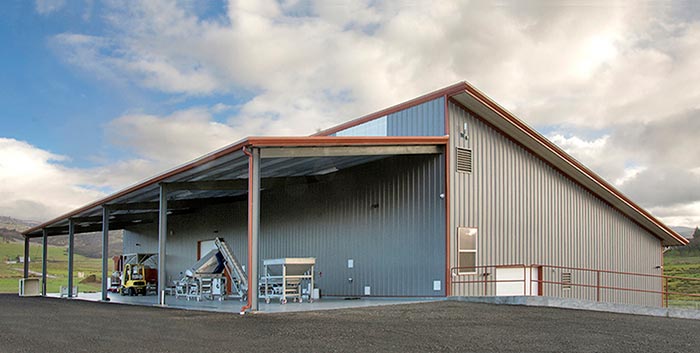
Reason: Single slope roofs can be used for some special needs buildings in temperate regions, such as small warehouses or simple ancillary buildings. A single slope roof with low span structure (small span) can reduce construction costs, and in temperate climate conditions, as long as the drainage slope is designed reasonably (generally between 15 ° -30 °), it can also meet basic drainage and snow treatment requirements.
Case Study: A small timber warehouse in a remote area of Canada adopts a steel building with a low span single slope roof, with a roof slope of 20 °. Due to the relatively simple warehouse function despite the high winter snowfall in the region, this low span single slope roof structure not only meets drainage and snow sliding requirements, but also reduces construction costs, making it an economical and practical choice.
3. Cold climate zone
① Climate characteristics
Winter in cold regions is long and cold, with heavy snowfall and extremely low temperatures.
② Suitable types of steel buildings
Double slope roof steel building (steep slope)
Reason: The design of double pitched roofs with large slopes (generally exceeding 45 °) is very necessary in cold regions. A steep roof can quickly allow snow to slide down, avoiding damage to the roof structure caused by excessive snow accumulation. In addition, the structural stability of the double pitched roof helps to resist strong wind weather in cold regions. In the selection of building materials, it is necessary to use steel with good cold resistance to ensure the structural integrity of the building in low-temperature environments.
Case Study: A large fish processing plant in Norway adopts a steel building with a double sloping roof, with a roof slope of 50 °. In the cold winter, a large amount of snow can quickly slide down the steep roof slope, protecting the production equipment and stored fish products in the factory. Meanwhile, this steep double slope roof structure also performs well in resisting strong winds near the Arctic Circle.
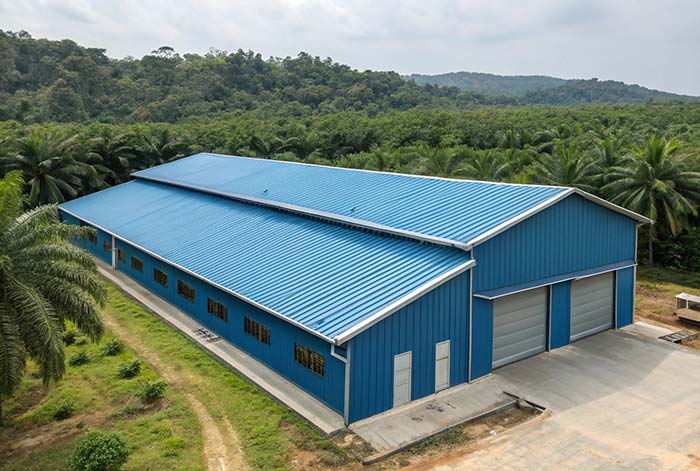
Composite roof steel building (combination of double slope and single slope)
Reason: For some large buildings in cold regions, such as large industrial complexes or urban public buildings, a modular roof structure can be adopted. For example, the main production or office areas can be equipped with double sloped roofs to cope with snow and strong winds, while some ancillary buildings or connecting parts can be equipped with single sloped roofs (the slope is adjusted according to the actual situation, generally between 20 ° -35 °), which can comprehensively consider functional and aesthetic needs.
Case Study: A large tourism service center in Iceland adopts a modular roof steel building. The main tourist reception and leisure areas adopt double sloping roofs with a slope of 55 °, ensuring the rapid sliding of snow and the stability of the building; The channels and ancillary buildings connecting various functional areas adopt a single slope roof with a slope of 25 °, which not only meets the functional requirements, but also forms a unique and harmonious architectural appearance as a whole.
4. Windy regions (such as coastal areas or high-altitude wind prone areas)
① Climate characteristics
These areas have strong winds throughout the year and relatively fixed wind directions, which require high stability and wind resistance for buildings.
② Suitable types of steel buildings
Low slope double slope roof steel building
Reason: Double sloped roofs with low slopes (usually between 15 ° -30 °) have good wind resistance performance in windy areas. This roof shape allows wind to flow smoothly over the surface of the building, reducing wind turbulence and pressure differences, thereby improving the stability of the building. The structure of a double pitched roof also helps to disperse wind and avoid excessive local stress. This form of steel building is often used in some industrial plants and residential buildings in coastal areas.
Case Study: A coastal high-rise residential complex in Rio de Janeiro, Brazil, adopts a steel building structure with low slope double slope roofs, with a roof slope of 20 °. When facing strong winds in the ocean, buildings can maintain stability, reducing the risk of wind damage to the building structure. At the same time, this roof form also provides residents with a wider view.
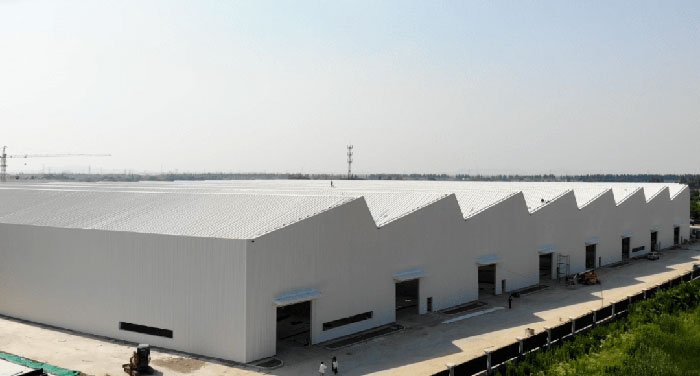
Single slope roof steel building (downwind low span structure)
Reason: In windy areas, if a single slope roof is used, setting a low span structure (with a smaller span) in the downwind direction can further reduce wind resistance. This structural form allows the wind to blow smoothly along the slope of the roof, reducing the lateral wind force on the building.
Case Study: A small communication station in the western coastal region of Australia adopts a steel building with a downwind low span single slope roof, with a roof slope of 15 °. This structural form enables communication stations to operate normally in strong wind environments, reducing the risk of equipment damage caused by wind disasters.
5. Desert climate zone
① Climate characteristics
The climate in desert areas is arid, with large temperature differences between day and night, and strong sandstorms.
② Suitable types of steel buildings
Single slope roof steel building (high span, small slope)
Reason: A single slope roof design with high spans and small slopes (generally between 10 ° -20 °) is more suitable in desert areas. High span structures can provide a larger internal space, making it easier to install shading, ventilation, and other facilities. A small slope can reduce the accumulation of wind and sand on the roof, as the slope is small and it is not easy for wind and sand to form a clear accumulation slope on the roof surface. At the same time, single slope roofs can utilize the slope of the roof for certain solar energy utilization (such as setting up solar photovoltaic panels) under the sunshine conditions in desert areas, improving the building’s energy self-sufficiency.
Case Study: A solar power plant auxiliary building in a desert in the United Arab Emirates adopts a steel building with a single slope roof, with a roof slope of 15 degrees. This structural form not only meets the layout requirements of internal equipment in the building, but also effectively reduces wind and sand accumulation. At the same time, a part of the solar photovoltaic panels are installed on the slope of the roof, providing certain power support for the operation of the building.
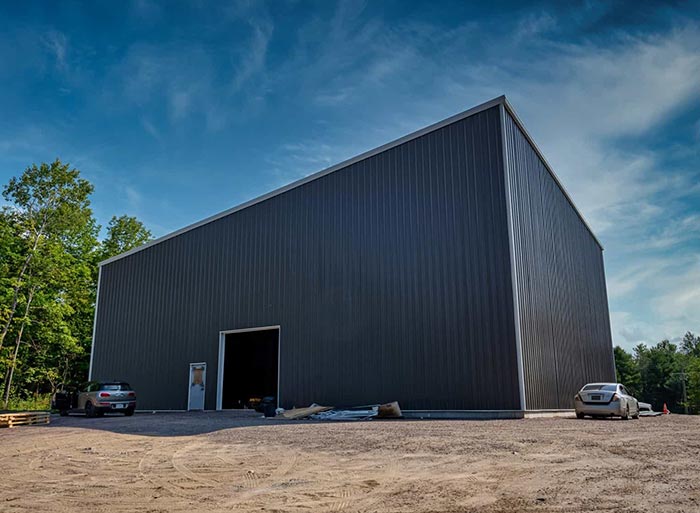
Summary
| Climate Zone | Suitable Steel Building Type | Roof Slope Range | Main Reasons |
|---|---|---|---|
| Tropical | Double-slope roof steel building | 30°-60° | Facilitates rapid rainwater drainage and meets building space requirements. |
| Tropical | Single-slope roof steel building (high-span structure) | 20°-40° | Ensures drainage while providing a spacious interior space. |
| Temperate | Double-slope roof steel building (medium slope) | 25°-45° | Adapts to seasonal changes, balancing rainwater drainage and snow load handling. |
| Temperate | Single-slope roof steel building (low-span structure) | 15°-30° | Meets special needs (e.g., small warehouses) and reduces costs. |
| Cold | Double-slope roof steel building (steep slope) | >45° | Enables rapid snow sliding and resists strong winds in cold regions. |
| Cold | Composite roof steel building (combination of double-slope and single-slope) | Double-slope: >45°; Single-slope: 20°-35° | Balances functional and aesthetic requirements for large-scale cold-region buildings. |
| Windy Areas (e.g., coastal areas or highland wind gaps) | Low-slope double-slope roof steel building | 15°-30° | Reduces wind resistance and improves structural stability. |
| Windy Areas (e.g., coastal areas or highland wind gaps) | Single-slope roof steel building (downwind low-span structure) | 15°-20° | Further minimizes wind resistance by aligning with wind direction. |
| Desert Climate Zones | Single-slope roof steel building (high-span, low slope) | 10°-20° | Reduces sand accumulation and facilitates solar energy utilization. |
When choosing a steel building type, in addition to considering climatic factors, it is also necessary to comprehensively consider various factors such as the functional requirements of the building, budget costs, local building codes, and cultural aesthetics. By comprehensively weighing these factors, the most suitable type of steel building for a specific climate zone and demand can be selected.
As a well-known steel structure construction supplier in China, Canglong Group has 20 years of industry experience and provides one-stop steel structure solutions from design to installation. We have a factory of 100000 square meters, and all our products have been certified by ISO and CE, and are sold to over 80 countries and regions worldwide.
Related Posts
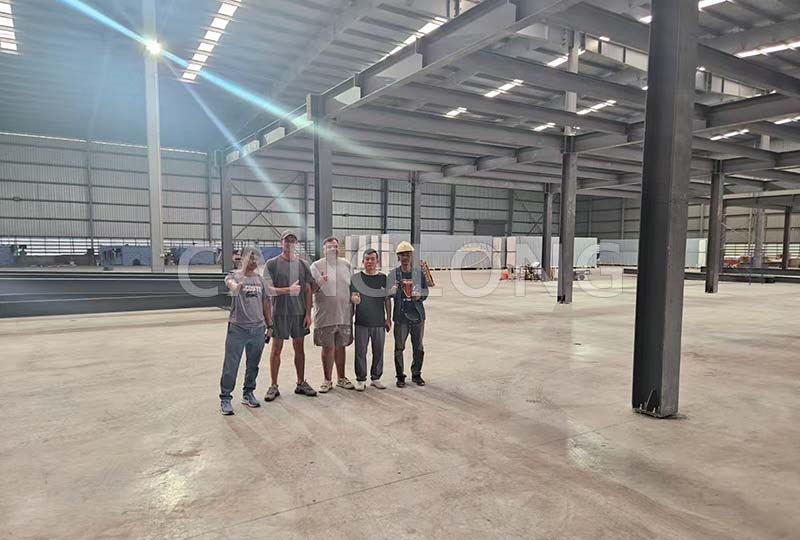
 November 5, 2025
November 5, 2025
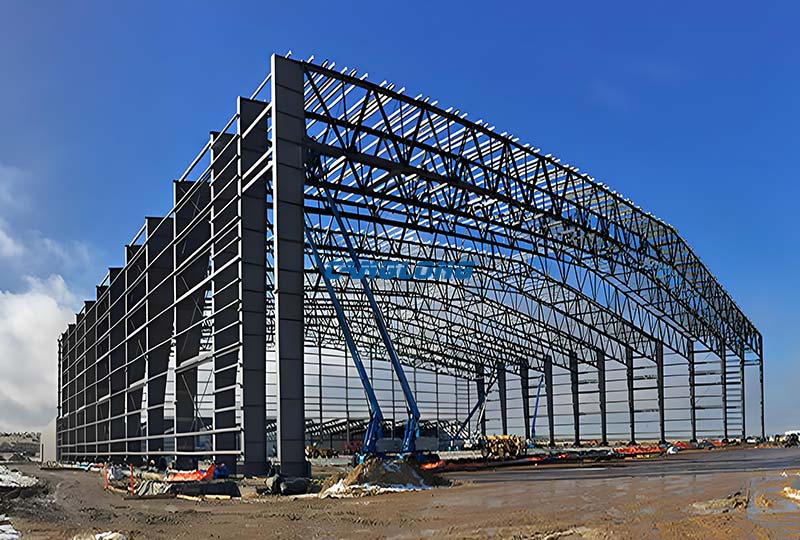
 September 3, 2025
September 3, 2025
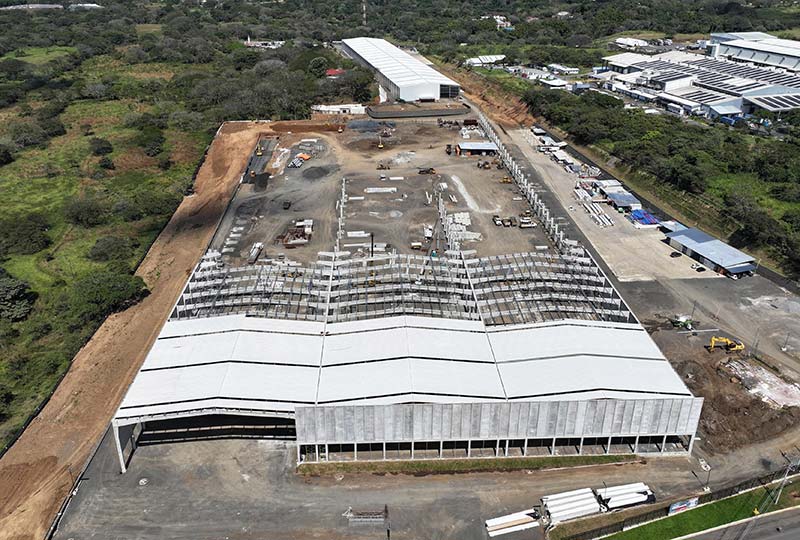
 September 26, 2025
September 26, 2025
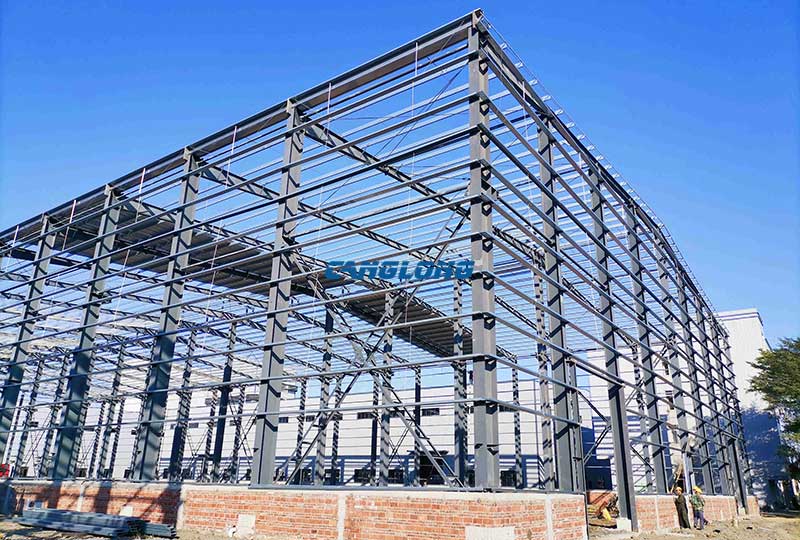
 August 13, 2025
August 13, 2025
Leave a Message
Your email address will not be published. Required fields are marked *

